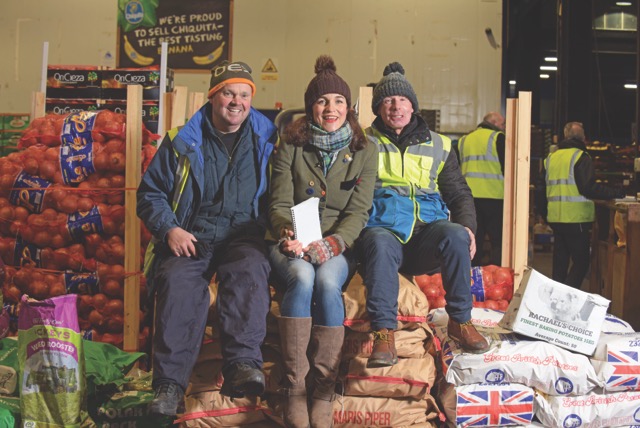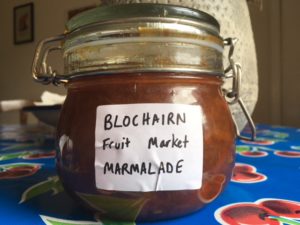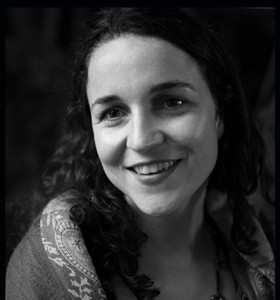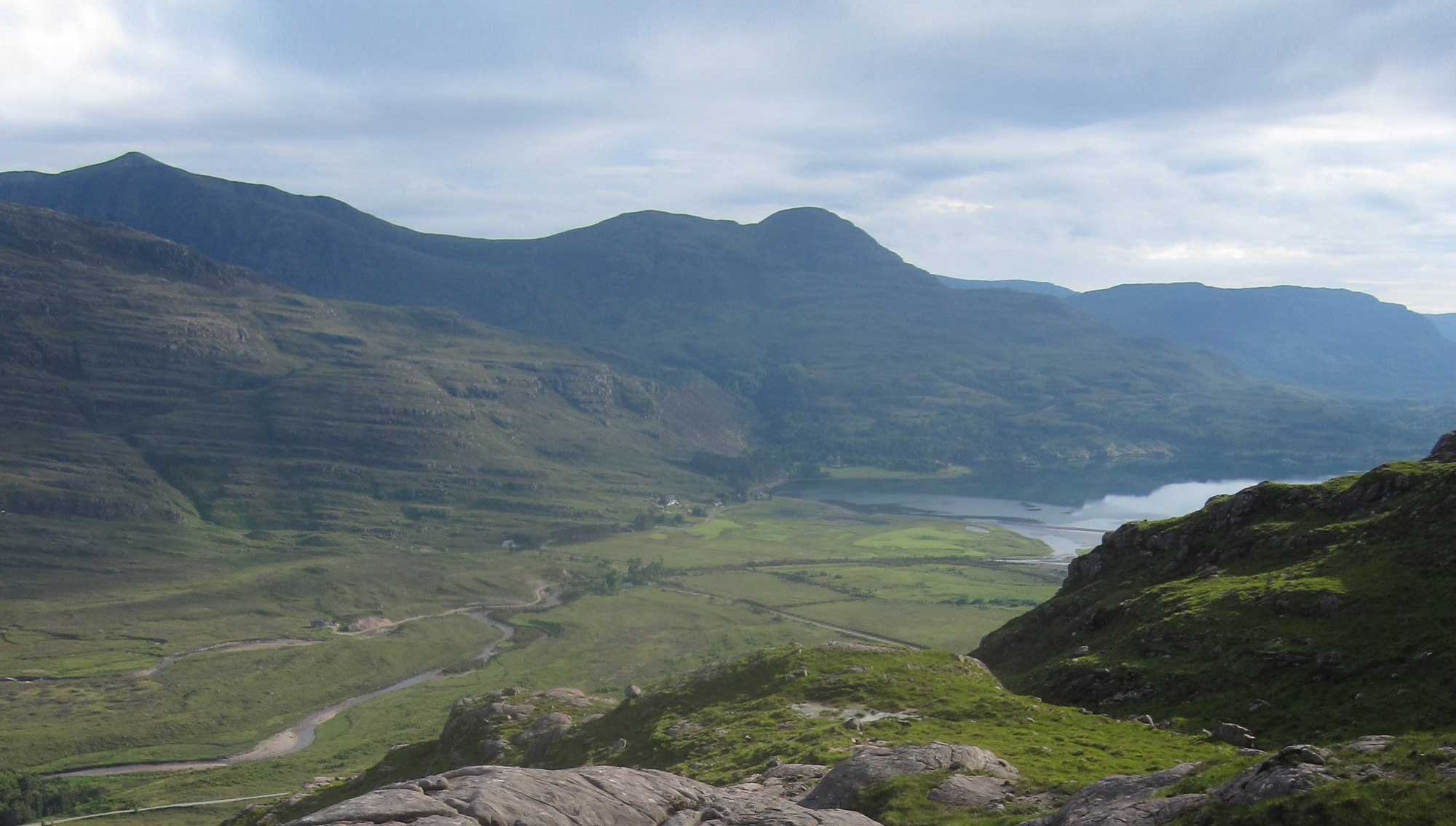
Louise Gray investigating fruit and veg at Blochairn Fruit Market in Glasgow © Angus Blackburn, Scottish Field
I have officially started a new project, and it’s all about where our fruit and vegetables come from….
Fruit and vegetables are often portrayed as ‘clean’ to use a favourite word in the Instagram and healthy eating community. It is true, eating fruit and veg is generally good for you, the more the better. Orchards of fruit trees and raised beds full of kale are seen as signs of a natural countryside and wholesome lifestyle.
But how ‘clean’ is an orchard recently sprayed with pesticide so all our apples are perfect? Or organic kale grown in pig manure?
I don’t wish to put you off salad but I do want to look a little bit more closely at how our most popular fruits and vegetables are grown, transported, processed and sold.
My last book, The Ethical Carnivore, investigated the reality of where our meat comes from. You may think investigating fruit and vegetables will be easy in comparison. It may be less gory, but it will be just as complex.
Should all bananas be fair-trade? Is organic always better? How much water is used to produce your peppers from Spain?
What DOES the avocado emoji mean?

For the next year – perhaps more – I will be investigating some of the issues behind our fruit and vegetables.
The Scottish Field magazine will be publishing a monthly column about the research I am carrying out in Scotland.
You can subscribe to the magazine and save 20% on the cover price, plus they throw in some tasty condiments.
The first column in this month’s April edition explains why understanding our food is so important and features a trip to Scotland’s biggest wholesale market Blochairn Market in Glasgow. The market suffered a fire in late 2017 but has bounced back. I recommend visiting if you can – though it does mean getting up at 5am. Blochairn sells fruit and vegetables from over 40 countries around the world to restaurants and independent greengrocers. The colour and variety is joyous to behold and the banter with the traders is always fun. In the past much more fresh produce came via wholesale markets like this, but nowadays most of us buy our fruit and vegetables from supermarkets. It may make shopping more convenient but arguably means we have less contact with growers and a less diverse range of fruit and veg to choose from.

Louise Gray investigating fruit and veg at Blochairn Fruit Market in Glasgow © Angus Blackburn, Scottish Field
My column goes into detail about some of the stories behind our favourite fruit and vegetables. One thing is clear, the farming methods, trade routes and transport all impact on our shared environment. Decisions about the food we buy is one of the few ways we can make a difference to climate change.
I would like to give readers more information so they can make their own decisions. It’s going to take a long time to find out the story behind much of our everyday purchases and most of the answers will have to wait for the book I hope to write…
The purpose of this blog is to occasionally reach out to readers to post photographs, test ideas and occasionally share random details that perhaps a more specialised audience may be interested in. You can also follow me @loubgray on Instagram and Twitter.
For instance the Seville oranges I was kindly given at Blochairn to make (slightly burned) marmalade. (It’s delicious btw) But how do you stop it burning??

Marmalade made with Seville Oranges from Blochairn Market
For me it is also an emotional journey that feeds into my life and how I feel about food. I have recently published a more personal look at my own past and coming to terms with recovery from an eating disorder in the Observer Magazine.
Food is such an integral part of our life. Understanding where it comes from can not only make us healthy but bring us joy. I will be attempting to grow my own fruits and vegetables as well as visiting farmers and producers. Already I am meeting interesting characters and finding out some unexpected facts.
I would like to know if there are any subjects in the fruit and veg world you would like to explore?
Are you worried about how far green beans are flown to get to the UK?
Do you miss older varieties of apples?
Do you eat wonky carrots?
When do you eat strawberries?
Does organic lettuce taste better?
Please post comments below and I will try to respond when I can.
🍎🍌🍊🍉🍆🍓🍑🍍🍇🍒🍋🍅🍐🍏
x



Just read your piece in Scottish Field about tomatoes. We visited area in Spain last year. I won’t eat another imported tomato now! Acres & acres of field covered in plastic greenhouses. Not glass; plastic & huge areas set aside for discarded plastic. It’s a total eyesore! Have you seen it yourself? If that’s what it takes to grow tomatoes, I’d rather not eat them! This is in an arid area where most of the rivers have dried out. I don’t know if this is down to the intensive farming methods or drought or climate change or a combination of all three, but it looks awful.
Well done for promoting local. Thank you
Please can you tell me where I can buy Standhill tomatoes in Fife?